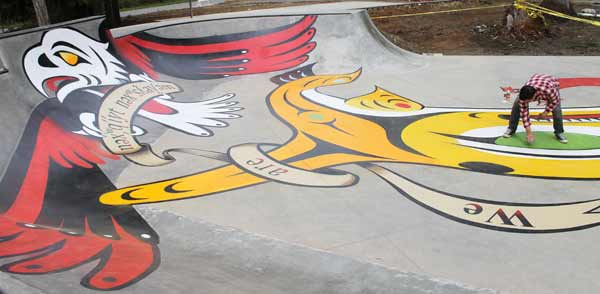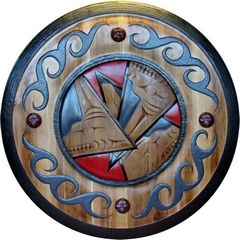By Tom Banse, NW News Network
It started with the discovery of long-forgotten gravestones in a thicket of bramble and alder. That set one author on the faint trail of a feisty Native American woman and oyster farmer who lived in 19th century western Washington.
The biographer is using the resulting book to inspire other Northwesterners — particularly tribal members. She wants to bring out the stories of people who, in her words, have been “left out of our histories.”
The waterfront cottage that LLyn De Danaan calls home on Oyster Bay in Mason County, Washington, overlooks a cultural crossroads rich in history. So it is fortunate she is a cultural anthropologist by profession. Her eyes and ears are tuned to signs and stories of place. And at this place, waves of settlers came from the earliest times to reap shellfish.
De Danaan moved here in the early 1970s. In recent decades, she heard enough tales about one pioneer to start a file. The name was Katie Gale. This independent businesswoman owned property and tidelands in her own name in the late 1800s.
“That was all a little bit unusual from conventional wisdom and things I had heard about both people in the oyster business and Native American women,” says De Danaan.
Finding Katie Gale
The biographer was fascinated by how Gale straddled different worlds and stood up for herself and her mixed race children.

“I suppose there just were too many things about that that intrigued me that I couldn’t let go of it,” she says. “I literally couldn’t let go of it for years!”
A turning point came when De Danaan and several friends from the historical society discovered an overgrown little homestead graveyard a mile from her house. One of the headstones belonged to Katie Gale.
“I was so amazed, excited, enthralled that I began beating on Stan’s shoulders as he was kneeling in front of me holding this stone.”
Her friend had to plead with her to contain her excitement and stop it.
“I literally said, ‘I know who this is,’ as if she were an acquaintance of mine. But it almost felt that way,” recalls De Danaan. “I would say that was a moment of calling. I have to tell this woman’s story. I have to know her.”
But here’s the problem: the long-dead Katie Gale left no letters, no journals. De Danaan could find no photographs of her, no living descendants. The best source material was a divorce case file. It took almost a decade to accumulate corroborating details, context and enough educated guesses to write a biography. “Katie Gale: A Coast Salish Woman’s Life on Oyster Bay” was published last fall.
“So many stories not told”
But the tale doesn’t stop there.
“There are so many stories not told,” says De Danaan. “There are so many histories and people left out of our histories. That is what my work has to be now. I feel that it is my obligation to do that.”
At a writing class at the Evergreen State College Longhouse in Olympia, De Danaan is a guest speaker.
De Danaan exhorts the seminar to bring forth stories before they’re lost, perhaps starting with family history. This is a message De Danaan returns to again and again in regular public talks and one-on-one mentoring.
“You’re able to find out a lot more than you think,” she says.
All of the students in the circle facing the author this day are Native American. It takes awhile, but eventually sensitivities come out.
Keeping tradition and culture alive

One student says she was hesitant about taking the class. Her grandmothers warned against exposing too much of their Spokane tribal heritage to outsiders who might twist it or exploit it.
Makah tribal member Vince Cook heard that from his elders too.
“That’s a tough one,” he says. “Because when I was younger we were told not to record, not to videotape.”
Cook says attitudes are changing now as people see tradition and culture slipping away. He feels spurred to write about his great grandmother and all the things she taught him.
“I think it is important to continue on not only for myself, but for my family and for others to know about the Makah culture and to keep it alive,” says Cook.
Another person who says author De Danaan encouraged him is amateur folklorist Si Matta of rural Pe Ell, Washington. Matta’s focus is on gathering the stories of his ancestors from the Cascade (Watala) Indian tribe who once lived and fished in the Columbia River Gorge.
He’s approaching the task in a thoroughly modern way by soliciting and sharing material and old photographs via a website and Facebook page.





